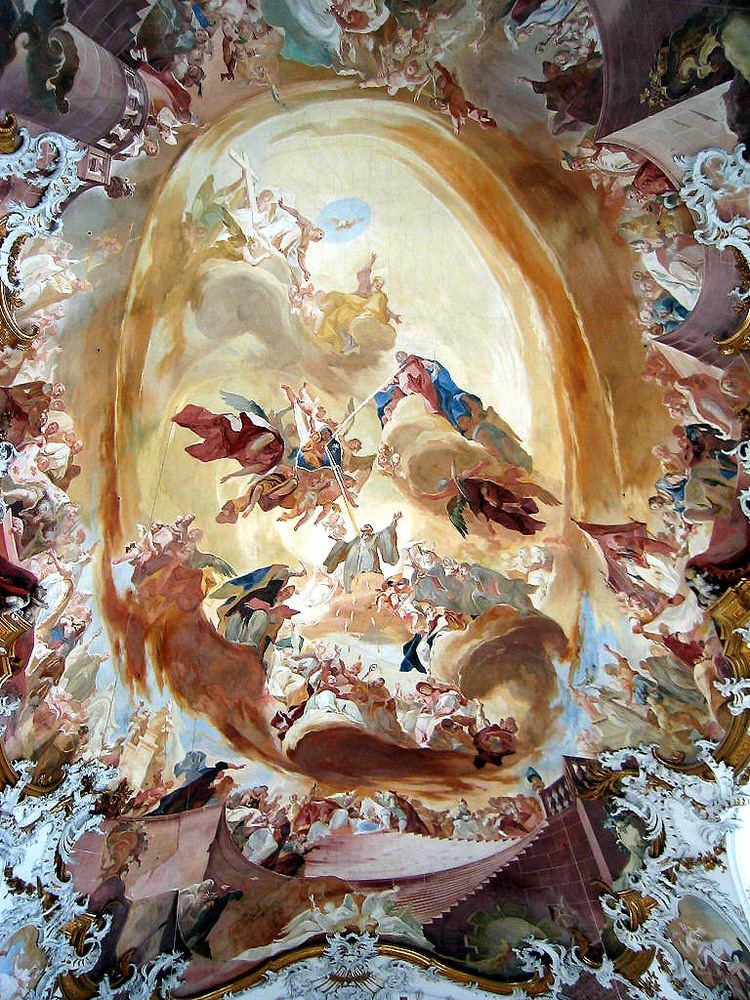Nationality German Known for Painting | Name Franz Spiegler | |
 | ||
Born April 15, 1691 ( 1691-04-15 ) Wangen im Allgau Died April 15, 1757, Konstanz, Germany | ||
Franz Joseph Spiegler (5 April 1691 – 15 April 1757) was a German Baroque painter. He is best known for his frescoes, which decorate many of the churches and monasteries along the Upper Swabian Baroque Route. The frescoes in the Zwiefalten Abbey are considered his masterpiece.
Contents
Spiegler was born the Free Imperial City of Wangen im Allgau, the son of a district court attorney. After the death of his father in 1692, his mother married the painter Adam Joseph Dollmann, a member of an old patrician family in Wangen. This was Spiegler's introduction to the arts. Around 1710 Spiegler began training as a painter in Munich under the tutelage of his great-uncle, the Bavarian court painter Johann Kaspar Sing. During the course of his studies, Spiegler also became acquainted with the historical painting in vogue with the Dutch painters of the time. From 1723 to 1725 Spiegler painted frescoes in the Ottobeuren Abbey that show the strong influence of the Italian painter Jacopo Amigoni (1682–1752). Later he also created frescoes and oil paintings for numerous monasteries, churches, and castles in the regions of Upper Swabia, Lake Constance, the Black Forest, and the Upper Rhine. In 1757 Spiegler died in Konstanz.
